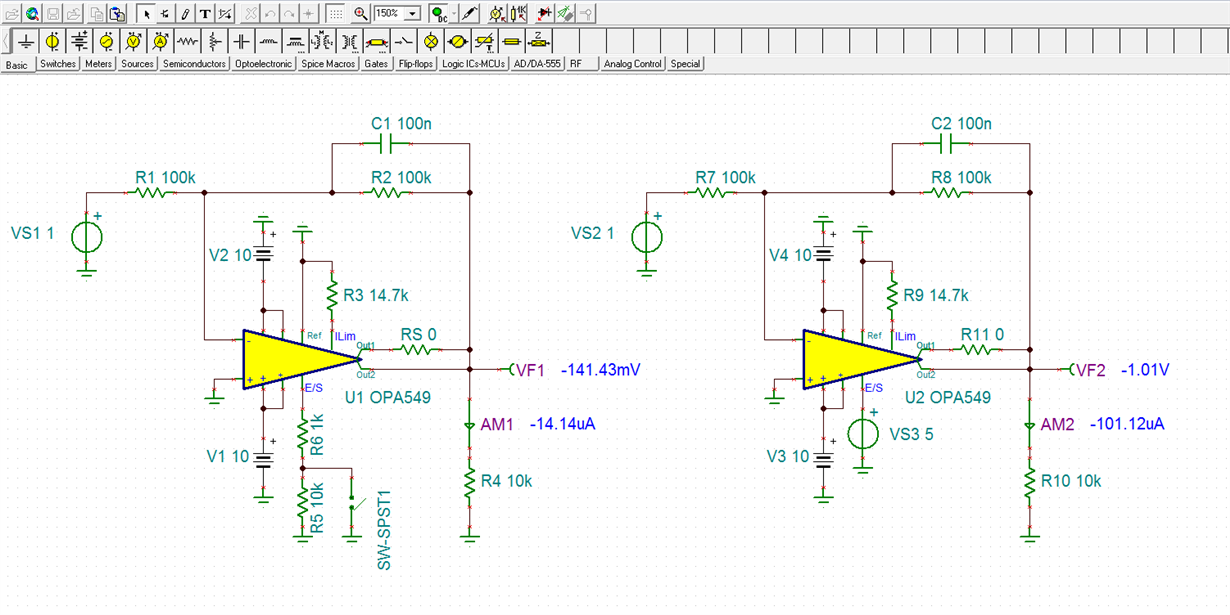I am having trouble with the OPA549 model.
Here is the test circuit I amusing. The inverting pin is connected to a 1Vdc source through a 100 kOhm resistor.The output should be -1V.
It ix -141..114629393mV to -141.462593mV. 984.8pV pk-pk triangular ripple
with a period of 38.288uS.
Is there a problem with the model or my test circuit?
This circuit is used in a larger system and this schematic represents
How it is used in the system except for the 1V source input and the 10K load.
Inverting terminal Input resistance is 100 kOhms. Feedback is 100 kOhms shunted by a 0.1uF capacitor
Ref is grounded.
Ilim is connected to ground through a 17.4 kOhm resistor shunted by a 0.01uF capacitor.
E/S is connected to ground through a 1 kOhm and 10 kOhm resistors to ground. There is a voltage controlled switch connected at the junction of the 1 kOhm and the10 kOhm resistors
The 1 kOhm is tied to the E/S pin and the 10 kOhm is grounded.
non-inverting pin is grounded.
Vcc aand Vee are connected to +10V and-10V respectively


